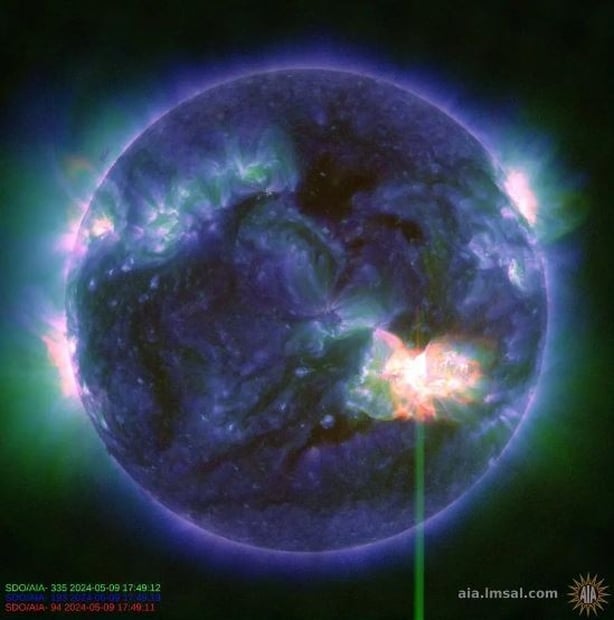US authorities have issued the first Severe (G4) Geomagnetic Storm Watch alert in almost 20 years as a powerful solar storm will hit Earth, with one enthusiast saying there's a "good chance" of seeing the Northern Lights in Ireland.
The National Oceanic and Atmospheric Administration (NOAA) issued the alert late yesterday, the first alert of this level since 2005.
It said at least five "earth-directed coronal mass ejections" were observed and expected to arrive as early as today and to persist through until Sunday.
Large sunspot groups and strong solar flares led to the issuance of SWPC's first G4 Watch since 2005... pic.twitter.com/oi55cTPXhP
— NOAA Space Weather Prediction Center (@NWSSWPC) May 9, 2024
It also said several strong flares have been observed over the past few days and were associated with a large and magnetically complex sunspot cluster, which it says is 16 times the diameter of Earth.
Alan O'Reilly, Carlow Weather, said: "The solar activity has been a very, very high level, not seen in many years, the number of solar flares coming off a sunspot - very active sunspot activity on the sun, which create these ZMEs that some of them come towards Earth and the ones that do then can create the Northern Lights.
"It's a lot of different variables but it's been very intense so there is a good chance of seeing some Northern Lights activity tonight and tomorrow night especially, if you do manage to stay under those clear skies and you don't have fog, because fog could ruin it for a few areas."
He said due to earlier sun rise and later sunset at this time of year, "the window is shorter."
But he said given the intensity of the solar activity, "it could be a very good chance to see the Northern Lights over Ireland."
Mr O'Reilly said the best chance was away from any light pollution and to use a smartphone camera, ideally propped up by a tripod.
"Very often over Ireland you won't see it with a naked eye, but you will be able to take a photograph of it with your smartphone," he said.
"And obviously the further north you are the better chance, and if you are in an area that has fog, getting up the mountain is your best chance to be able to get above that fog."
Coronal mass ejections are explosions of plasma and magnetic fields from the sun and cause geomagnetic storms when they are directed at Earth.
The NOAA says geomagnetic storms can impact infrastructure in near-Earth orbit and on Earth's surface, potentially disrupting communications, the electric power grid, navigation, radio and satellite operations.
In 2003, a G5 solar geomagnetic storm resulted in power outages in Sweden and damaged power transformers in South Africa.
Geomagnetic storms can also trigger spectacular displays of aurora on Earth and the Northern Lights may be visible tonight and tomorrow night.
Mathew Owens, a professor of space physics at the University of Reading, told AFP that while the effects would be largely felt over the planet's northern and southern latitudes, how far they would extend would depend on the storm's final strength.
"Go outside tonight and look would be my advice because if you see the aurora, it's quite a spectacular thing," he added. If people have eclipse glasses, they can also look for the sunspot cluster during the day.


